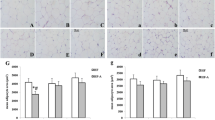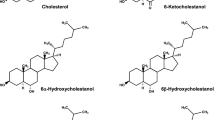Abstract
Non-esterified fatty acids (NEFAs) act as signaling molecules involved in regulating genes expression to modulate lipid metabolism. However, the regulation mechanism of NEFAs on lipid metabolism in dairy cows is unclear. The AMP-activated protein kinase (AMPK) signaling pathway plays a key role in regulating hepatic lipid metabolism. In vitro, bovine hepatocytes were cultured and treated with different concentrations of NEFAs and AMPKα inhibitors (BML-275). NEFAs increased AMPKα phosphorylation through up-regulating the protein levels of liver kinase B1. Activated AMPKα increased the expression and transcriptional activity of peroxisome proliferator-activated receptor α (PPARα). NEFAs also directly activate the PPARα independent of AMPKα. Activated PPARα increased the lipolytic genes expression to increase lipid oxidation. Furthermore, activated AMPKα inhibited the expression and transcriptional activity of the sterol regulatory element-binding protein 1c and carbohydrate responsive element-binding protein, which reduced the expression of lipogenic genes, thereby decreasing lipid synthesis. Activated AMPKα phosphorylated and inhibited acetyl-CoA carboxylase and increased carnitine palmitoyltransferase-1 activity, which increased lipid oxidation. Consequently, the triglyceride content in the NEFAs-treated hepatocytes was significantly decreased. These results indicate that NEFAs activate the AMPKα signaling pathway to increase lipid oxidation and decrease lipid synthesis in hepatocytes, which in turn, generates more ATP to relieve the negative energy balance in transition dairy cows.








Similar content being viewed by others
Abbreviations
- NEB:
-
Negative energy balance
- NEFAs:
-
Non-esterified fatty acids
- AMPK:
-
AMP-activated protein kinase
- LKB1:
-
Liver kinase B1
- PPARα:
-
Peroxisome proliferator-activated receptor α
- SREBP-1c:
-
Sterol regulatory element-binding protein 1c
- ChREBP:
-
Carbohydrate responsive element-binding protein
- TG:
-
Triglyceride
- ACO:
-
Acyl-CoA oxidase
- CPT1:
-
Carnitine palmitoyltransferase 1
- CPT2:
-
Carnitine palmitoyltransferase 2
- L-FABP:
-
Liver fatty acid-binding protein
- ACSL:
-
Acyl-CoA synthetase long-chain
- ACC1:
-
Acetyl-CoA carboxylase 1
- p-ACC1:
-
Phosphorylated-ACC1
- FAS:
-
Fatty acid synthase
- SCD-1:
-
Stearoyl-CoA desaturase-1
- p-AMPKα:
-
Phosphorylated-AMPKα
- EMSA:
-
Electrophoretic mobility shift assay
- PUFAs:
-
Polyunsaturated fatty acids
References
Dann, H. M., & Drackley, J. K. (2006). Carnitine palmitoyltransferase I in liver of periparturient dairy cows: effects of prepartum intake, postpartum induction of ketosis, and periparturient disorders. Journal of Dairy Science, 88, 3851–3859.
Loor, J. J., Everts, R. E., Bionaz, M. H., Dann, M., Morin, D. E., Oliveira, R., et al. (2007). Nutrition-induced ketosis alters metabolic and signaling gene networks in liver of periparturient dairy cows. Physiological Genomics, 32, 105–116.
Wathes, D. C., Cheng, Z., Fenwick, M. A., Fitzpatrick, R., & Patton, J. (2011). Influence of energy balance on the somatotrophic axis and matrix metalloproteinase expression in the endometrium of the postpartum dairy cow. Reproduction, 141, 269–281.
Xu, C., Wang, Z., Liu, G. W., Li, X. B., Xie, G. H., Xia, C., et al. (2008). Metabolic characteristic of the liver of dairy cows during ketosis based on comparative proteomics. Asian-Australian Journal of Animal Sciences, 21, 1003–1010.
Jorritsma, R., Jorritsma, H., Schukken, Y. H., Bartlettd, P. C., Wensinga, T., & Wentink, G. H. (2001). Prevalence and indicators of post partum fatty infiltration of the liver in nine commercial dairy herds in The Netherlands. Livestock Production Science, 68, 53–60.
Zhang, Z., Li, X., Liu, G., Gao, L., Guo, C., Kong, T., et al. (2011). High insulin concentrations repress insulin receptor gene expression in calf hepatocytes cultured in vitro. Cellular Physiology and Biochemistry, 27, 637–640.
Duplus, E., Glorian, M., & Forest, C. (2000). Fatty acid regulation of gene transcription. Journal of Biological Chemistry, 275, 30749–30752.
Jump, D. B., Botolin, D., Wang, Y., Xu, J., Christian, B., & Demeure, O. (2005). Fatty acid regulation of hepatic gene transcription. Journal of Nutrition, 135, 2503–2506.
Kahn, B. B., Alquier, T., Carling, D., & Hardie, D. G. (2005). AMP-activated protein kinase: ancient energy gauge provides clues to modern understanding of metabolism. Cell Metabolism, 1, 15–25.
Hardie, D. G. (2003). The AMP-activated protein kinase cascade: the key sensor of cellular energy status. Endocrinology, 144, 5179–5183.
Viollet, B., Foretz, M., Guigas, B., Horman, S., Dentin, R., Bertrand, L., et al. (2006). Activation of AMP-activated protein kinase in the liver: A new strategy for the management of metabolic hepatic disorders. Journal of Physiology, 574(Pt 1), 41–53.
Long, Y. C., & Zierath, J. R. (2006). AMP-activated protein kinase signaling in metabolic regulation. The Journal of Clinical Investigation, 116, 1776–1783.
Martínez, N., White, V., Kurtz, M., Higa, R., Capobianco, E., & Jawerbaum, A. (2011). Activation of the nuclear receptor PPARα regulates lipid metabolism in foetal liver from diabetic rats: Implications in diabetes-induced foetal overgrowth. Diabetes/Metabolism Research and Reviews, 27, 35–46.
Uyeda, K., & Repa, J. J. (2006). Carbohydrate response element binding protein, ChREBP, a transcription factor coupling hepatic glucose utilization and lipid synthesis. Cell Metabolism, 4, 107–110.
Kawaguchi, T., Osatomi, K., Yamashita, H., Kabashima, T., & Uyeda, K. (2002). Mechanism for fatty acid “sparing” effect on glucose-induced transcription: Regulation of carbohydrate-responsive element-binding protein by AMP-activated protein kinase. Journal of Biological Chemistry, 277, 3829–3835.
Li, Y., Xu, S., Mihaylova, M. M., Zheng, B., Hou, X., Jiang, B., et al. (2011). AMPK phosphorylates and inhibits SREBP activity to attenuate hepatic steatosis and atherosclerosis in diet-induced insulin-resistant mice. Cell Metabolism, 13, 376–388.
Shaw, R. J., Lamia, K. A., Vasquez, D., Koo, S. H., Bardeesy, N., Depinho, R. A., et al. (2005). The kinase LKB1 mediates glucose homeostasis in liver and therapeutic effects of metformin. Science, 310, 1642–1646.
Xu, C., Wang, Z., Zhang, R. H., Zhang, H. Y., Fu, S. X., & Xia, C. (2011). Effect of NEFA and glucose levels on CPT-I mRNA expression and translation in cultured bovine hepatocytes. Journal of Veterinary Medical Science, 73, 97–101.
Zhang, Z. G., Li, X. B., Gao, L., Liu, G. W., Kong, T., Li, Y. F., et al. (2012). An updated method for the isolation and culture of primary calf hepatocytes. Veterinary Journal, 191, 323–326.
Li, X., Li, X., Bai, G., Chen, H., Deng, Q., Liu, Z., et al. (2012). Effects of non-esterified fatty acids on the gluconeogenesis in bovine hepatocytes. Molecular and Cellular Biochemistry, 359, 385–388.
Ramnanan, C. J., McMullen, D. C., Groom, A. G., & Storey, K. B. (2010). The regulation of AMPK signaling in a natural state of profound metabolic rate depression. Molecular and Cellular Biochemistry, 335, 91–105.
Yu, P. B., Hong, C. C., Sachidanandan, C., Babitt, J. L., Deng, D. Y., Hoyng, S. A., et al. (2008). Dorsomorphin inhibits BMP signals required for embryogenesis and iron metabolism. Nature Chemical Biology, 4, 33–41.
Cameron, R. E., Dyk, P. B., Herdt, T. H., Kaneene, J. B., Miller, R., Bucholtz, H. F., et al. (1998). Dry cow diet, management, and energy balance as risk factors for displaced abomasums in high producing dairy herds. Journal of Dairy Science, 81, 132–139.
Li, P., Li, X. B., Fu, S. X., Wu, C. C., Wang, X. X., Yu, G. J., et al. (2012). Alterations of fatty acid β-oxidation capability in the liver of ketotic cows. Journal of Dairy Science, 95, 1759–1766.
Andreelli, F., Foretz, M., Knauf, C., Cani, P. D., Perrin, C., Iglesias, M. A., et al. (2006). Liver adenosine monophosphate-activated kinase-alpha 2 catalytic subunit is a key target for the control of hepatic glucose production by adiponectin and leptin but not insulin. Endocrinology, 147, 2432–2441.
Foretz, M., Ancellin, N., Andreelli, F., Saintillan, Y., Grondin, P., Kahn, A., et al. (2005). Short-term overexpression of a constitutively active form of AMP-activated protein kinase in the liver leads to mild hypoglycemia and fatty liver. Diabetes, 54, 1331–1339.
Suchankova, G., Tekle, M., Saha, A., Ruderman, N. B., Clarke, S. D., & Gettys, T. W. (2005). Dietary polyunsaturated fatty acids enhance hepatic AMP-activated protein kinase activity in rats. Biochemical and Biophysical Research Communications, 326, 851–858.
Clark, H., Carling, D., & Saggerson, D. (2004). Covalent activation of heart AMP-activated protein kinase in response to physiological concentrations of long-chain fatty acids. European Journal of Biochemistry, 271, 2215–2224.
Fediuc, S., Gaidhu, M. P., & Ceddia, R. B. (2006). Regulation of AMP-activated protein kinase and acetyl-CoA carboxylase phosphorylation by palmitate in skeletal muscle cells. Journal of Lipid Research, 47, 412–420.
Watt, M. J., Steinberg, G. R., Chen, Z. P., Kemp, B. E., & Febbraio, M. A. (2006). Fatty acids stimulate AMP activated protein kinase and enhance fatty acid oxidation in L6 myotubes. The Journal of Physiology, 574, 139–147.
Zhou, G., Myers, R., Li, Y., Chen, Y., Shen, X., Fenyk-Melody, J., et al. (2001). Role of AMP-activated protein kinase in mechanism of metformin action. The Journal of Clinical Investigation, 108, 1167–1174.
Qiu, L., Wu, X., Chau, J. F., Szeto, I. Y., Tam, W. Y., Guo, Z., et al. (2008). Aldose reductase regulates hepatic peroxisome proliferator-activated receptor alpha phosphorylation and activity to impact lipid homeostasis. Journal of Biological Chemistry, 283, 17175–17183.
Sugden, M. C., Bulmer, K., Gibbons, G. F., Knight, B. L., & Holness, M. J. (2002). Peroxisome proliferator-activated receptor-a (PPARa) deficiency leads to dysregulation of hepatic lipid and carbohydrate metabolism by fatty acids and insulin. Biochemical Journal, 364, 361–368.
Everett, L., Galli, A., & Crabb, D. (2000). The role of hepatic peroxisome proliferator-activated receptors (PPARs) in health and disease. Liver, 20, 191–199.
Pawar, A., & Jump, D. B. (2003). Unsaturated fatty acid regulation of PPARα activity in primary rat hepatocytes. Journal of Biological Chemistry, 278, 35931–35939.
Steven, D. C. (2001). Polyunsaturated fatty acid regulation of gene transcription: A molecular mechanism to improve. American Society for Nutritional Sciences, 60, 1129–1132.
Shimomura, I., Bashmakov, Y., & Horton, J. D. (1999). Increased levels of nuclear SREBP-1c associated with fatty livers in two mouse models of diabetes mellitus. Journal of Biological Chemistry, 274, 30028–30032.
Iizuka, K., Bruick, R. K., Liang, G., Horton, J. D., & Uyeda, K. (2001). Deficiency of carbohydrate response element-binding protein (ChREBP) reduces lipogenesis as well as glycolysis. Proceedings of the National Academy of Sciences of the United States of America, 101, 7281–7286.
Dobrzyn, A., Dobrzyn, P., Miyazaki, M., & Ntambi, J. M. (2005). Polyunsaturated fatty acids do not activate AMP-activated protein kinase in mouse tissues. Biochemical and Biophysical Research Communications, 332, 892–896.
Dentin, R., Benhamed, F., Pégorier, J. P., Foufelle, F., Viollet, B., Vaulont, S., et al. (2005). Polyunsaturated fatty acids suppress glycolytic and lipogenic genes through the inhibition of ChREBP nuclear protein translocation. The Journal of Clinical Investigation, 115, 2843–2854.
Hardie, D. G. (2004). The AMP-activated protein kinase pathway-new players upstream and downstream. Journal of Cell Science, 117, 5479–5487.
Ruderman, N. B., Saha, A. K., Vavvas, D., & Witters, L. A. (1999). Malonyl-CoA fuel sensing, and insulin resistance. American Journal of Physiology, Endocrinology and Metabolism, 276, 1–18.
Acknowledgments
This study was supported by the National Key Basic Research Program of China (No. 2011CB100800).
Author information
Authors and Affiliations
Corresponding authors
Additional information
Xinwei Li and Xiaobing Li contributed equally to this study.
Rights and permissions
About this article
Cite this article
Li, X., Li, X., Chen, H. et al. Non-Esterified Fatty Acids Activate the AMP-Activated Protein Kinase Signaling Pathway to Regulate Lipid Metabolism in Bovine Hepatocytes. Cell Biochem Biophys 67, 1157–1169 (2013). https://doi.org/10.1007/s12013-013-9629-1
Published:
Issue Date:
DOI: https://doi.org/10.1007/s12013-013-9629-1




